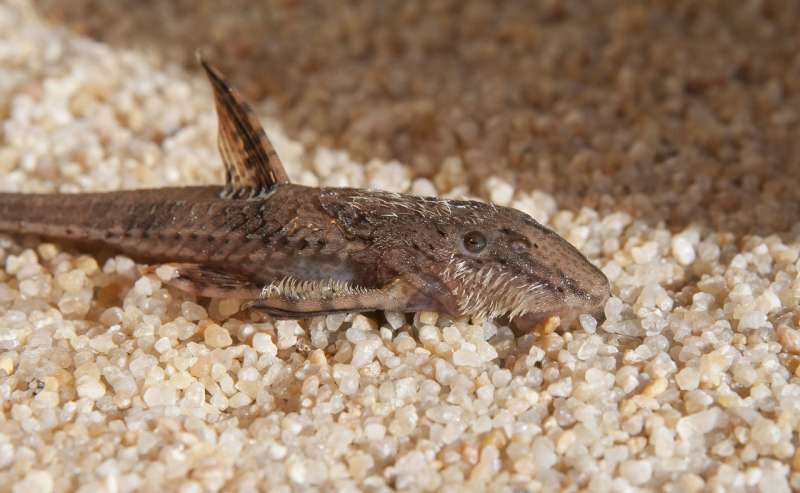Researchers report toothy findings in odontode-bearing catfish study

Certain species of catfish are covered with bony plates bristling with thin teeth, similar to extinct vertebrate lineages. These teeth, which regularly fall out and grow back, are used for defense and, in males, to attract females. Researchers at the University of Geneva (UNIGE), Switzerland, wanted to understand how teeth capable of regeneration can develop outside of the mouth. They discovered that the extra-oral teeth only grow from bone, regardless of its type, even in the absence of a bony plate. This suggests a role for bone in the induction of dental tissue. These results, published in the journal Proceedings of the Royal Society B, elucidate the mechanisms of the formation and regeneration of teeth in all vertebrates, including in humans.
The appearance of teeth in early jawed vertebrates allowed the emergence of super-predators capable of biting, grabbing and shredding their prey. In most modern vertebrates, teeth develop only in the mouth. "There are, however, rare exceptions—animals that also grow teeth on their body, as observed on certain fossil species. This is the case for so-called denticulate catfish, which have 'reinvented' body dentition during evolution," explains Juan Montoya-Burgos, group leader at the Department of Genetics and Evolution of the UNIGE Faculty of Science.
Denticulate catfish don't have scales. Many species instead have bony plates coated with thin teeth, including pulp, enamel and dentin. These teeth, which are capable of regeneration, play a role in defense against predators, in relationships between individuals, and even lengthen in males during the reproductive season. "We tried to find out how these extra-oral teeth, called odontodes, have reappeared in the course of evolution, and how they develop," says Carlos Rivera-Rivera, member of the Geneva group and first author of the study.
The researchers reconstructed the evolutionary history of catfish by comparing specific genes of the denticulate families with those of other families lacking odontodes, and were thus able to go back in time. "Odontodes appeared around 120 million years ago in the denticulate catfish lineage, long before the emergence of bony plates. The latter do not, therefore, constitute a prerequisite to developing teeth on the body," says Juan Montoya-Burgos.
It was through the analysis of the locations of odontodes that the scientists discovered a key prerequisite: "In species without bony plates, these teeth always develop on a bony structure of any type, for example, on an ossified fin ray. Thus, the bone probably plays a key role in the induction of the dental tissue," says Carlos Rivera-Rivera.
What is this role? The researchers are now trying to decipher the molecular dialogue that occurs during the formation of the bone to allow teeth to develop and then regenerate. They also want to identify the genes linked to the development of odontodes by comparing gene expression in the denticulate and non-denticulate species. Understanding the processes involved in the development and regeneration of teeth in our ancestors and cousins is a first step in uncovering the mechanisms, both stimulatory and inhibitory, that occur in all vertebrates.
More information: Trunk dental tissue evolved independently from underlying dermal bony plates but is associated to surface bones in living odontode-bearing catfish, Proceedings of the Royal Society B, rspb.royalsocietypublishing.or … .1098/rspb.2017.1831
Journal information: Proceedings of the Royal Society B
Provided by University of Geneva



















